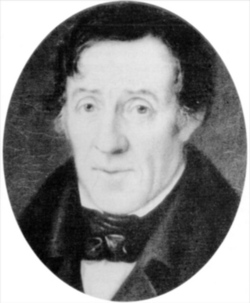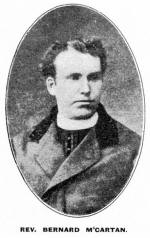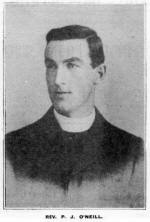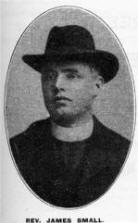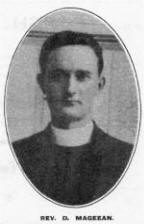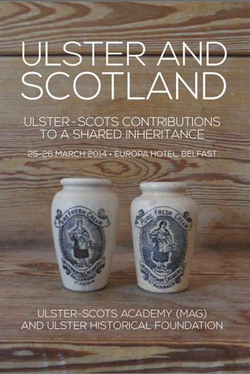
25 March 2014, 18:00, Europa Hotel, Belfast
Ran to 26 March 2014
This Conference was held under the auspices of the Ulster-Scots Academy (MAG) and the Ulster Historical Foundation. I attended with Helen Brooker (Pretani Associates) Chair of the original Ulster-Scots or Ullans Academy, which I founded in 1992, Liam Logan, member of the Ullans Academy and his BBC colleague Chris Spurr. There was not a single mention of the Cruthin all day, which is not surprising.
9.00-9.30am Tea/coffee registration. View exhibition.
SPEAKERS TOPICS
Paul Clark MC and Panel Chair for morning session
Billy Kay: ‘as ithers see us’
Mark Thompson Shared Future? What about our Shared Past?
Martin Dowling: Northern Ireland in the Fabric of Musical Traditions
Aodán Mac Póilin: Antrim and Argyll: Gaelic traditions of the Sea of Moyle
Moore Sinnerton: What’s the Story? Ulster-Scots and the media – Ulster-Scots in the media
LUNCH 1.00-2.00PM
William Roulston: Different perspectives on the Ulster-Scots
Roger Blaney: The loom of language
Iain Carlisle: Developing Ulster-Scots in the community
Andrew Holmes: From rebels to loyalists? Presbyterians and politics in the nineteenth century
Linde Lunney: English Presbyterians; forgotten Scots; and bad ‘Scotch eggs’ – no wonder Dublin is different!
Tim McGarry: Tim McGarry’s Ulster-Scots Journey
CONFERENCE CONCLUDES 5.00PM
PAUL CLARK: CHAIR, MORNING SESSION
Paul Clark has been presenting the news on UTV for the past twenty five years. He is passionate about Irish history. Paul is comfortable in the knowledge that one side of his family is Ulster-Scot, and the other, what he calls “native Irish”.
CONFERENCE SPEAKERS
DR ROGER BLANEY
Former Head of Department of Community Medicine & Medical Statistics at Queen’s Belfast, currently Co-Chairman of the ULTACH Trust and a Director of the Ullans Academy, Roger Blaney has always been fascinated by and committed to the important role of language in Northern Ireland society. He is author of the ground-breaking, Presbyterians and the Irish Language.
IAIN CARLISLE
Iain Carlisle is the Operations Manager of the Ulster-Scots Community Network. He has acquired a comprehensive knowledge of the Ulster-Scots community through close involvement with a wide range of projects and events.
PROF. MARTIN DOWLING
Martin Dowling is a fiddle player and historian. He was educated at the University of Chicago and the University of Wisconsin-Madison, and he performs and teaches Irish traditional music regularly in Europe and the United States. He was the Traditional Arts Officer of the Arts Council of Northern Ireland from 1998 to 2004 and subsequently held postdoctoral research fellowships in University College Dublin where he conducted research on traditional music, history, and identity. He is currently Lecturer in Irish Traditional Music at Queen’s University of Belfast.
DR ANDREW HOLMES
Andrew Holmes is a lecturer in Modern History at Queen’s University Belfast and graduate of QUB and the University of St Andrews. He was a Research Associate at the Academy for Irish Cultural Heritages at the University of Ulster, where he also taught Irish history, and a Research Fellow at the Institute of Irish Studies at Queen’s. He is a committee member of the Ecclesiastical History Society, and the Economic and Social History Society of Ireland.
BILLY KAY
‘As ithers see us’ – Billy Kay celebrates the historic cultural links across the Irish Sea and looks at the ties that bind and separate Scotland and Ulster today.Billy was born in Galston, Ayrshire. He has won five international awards for his programmes, which have been broadcast on BBC Radio 4, RTÉ Ireland, BBC Radio Ulster, ABC Australia, CBC Canada and Radio Netherlands World Service. In 2006, Mainstream Publishing issued a new edition of his classic work Scots: The Mither Tongue while his latest book The Scottish World was launched at the Edinburgh International Book Festival in August 2006. Growing up in the heart of the Burns country, Billy is steeped in the Burns tradition of poetry, song and language – a definite advantage when it comes to reciting poems like ‘Tam o’ Shanter’ and talking about the local, national and international connections in the bard’s work. Billy has also presented events based on Burns, Scottish culture and history at festivals such as Celtic Connections in Glasgow and the Smithsonian Folklife Festival in Washington DC. A Scotland football fan, he is also convinced that it was the Scots who taught the world to kick a ball. He has never been invited to give this talk in England! Billy Kay is passionate about Scotland and its people’s phenomenal influence around the world, and is able to communicate that passion with humour and love. For more details about Billy, visit www.billykay.co.uk
DR LINDE LUNNEY
Linde Lunney was born in Co. Antrim and went to Edinburgh University, and Queen’s University Belfast. Her PhD research was on eighteenth-century Ulster life and language, and she has maintained an interest in that time and place, and in identities and connections, throughout her career as a researcher and writer in the Dictionary of Irish Biography, a project in the Royal Irish Academy, Dublin.
AODÁN MAC PÓILIN
Aodán Mac Póilin is the Director of the ULTACH Trust, a cross-community Irish language organisation, since it was founded in 1990, and has been involved in a number of Scottish-Irish cultural initiatives, such as Colmcille / The Columba Initiative and Leabhar Mór na Gaidhlig / The Great Book of Gaelic.
TIM Mc GARRY
Tim McGarry is a former lawyer turned actor, writer, stand-up comedian and broadcaster. Best known as Da from Give my Head Peace he was the taxi driver in Hearts and Minds and is currently the chair of BBCNI’s popular panel show The Blame game. He wrote his own one man stand-up show Tim Mc Garry’s History Lesson. In 2013 he wrote and presented a two-part programme Tim McGarry’s Ulster-Scots Journey.
DR WILLIAM ROULSTON
William Roulston is Research Director with the Ulster Historical Foundation and has published a number of titles including, Researching Scots -Irish Ancestors
MOORE SINNERTON
Moore is a documentary filmmaker specialising in the arts, history, politics and cultural identity.
MARK THOMPSON
Born and still living on the Ards Peninsula, Mark was Chair of the Ulster-Scots Agency from 2005-2009. His background is in the creative industries and he has a wealth of experience in bringing Ulster-Scots heritage to the wider public.
RECEPTION AND DINNER last night, which we also attended .
THE OTHER TONGUES SHOWCASE
CONTRIBUTIONS FROM:
CHRIS AGEE
Chris Agee was born in San Francisco and grew up in Massachusetts, New York and Rhode Island. He attended Harvard University and since 1979 has lived in Ireland. He is the author of three books of poems, In the New Hampshire Woods (1992), First Light (2003) and Next to Nothing (2009) (shortlisted for the 2010 Ted Hughes Award for New Work in Poetry). He is the editor of Irish Pages a journal of contemporary writing based in Belfast.
DR FRANK FERGUSON
Frank Ferguson is Director of the Centre for Irish and Scottish Studies at the University of Ulster and is Project Manager of the Ulster-Scots Education Project.
AONGHAS MACLEÒID
Aonghas MacLeòid was born in Inverness. He spent his childhood between Inverness, Barra and Edinburgh before commencing postgraduate study at the University of Glasgow. He gained a firstclass honours degree, and completed an MPhil on the work of the Barra writer Donald Sinclair. He is currently researching a PhD, on the long poem in Scottish Gaelic in the twentieth century. He lives in Glasgow.
CATHAL Ó SEARCAIGH
Cathal Ó Searcaigh was born and raised in Meenala, near Gortahork, an Irish-speaking district in Co. Donegal. He was Writer-in-Residence in the Irish Language at the University of Ulster and Queen’s University Belfast. His many poetry collections include Súile Shuibhne (1983), Suibhe (1987) the bilingual An Bealach ’na Bhaile/Homecoming (1993), Na Buachaillí Bána (1996) and Aimsir Ársa (2013). His prose works include Seal I Neipeal (2004) and Pianó hín na bPreáchán (2011). He is the author of several plays in Irish. He continues to live in Meenala.
Musical entertainment: Sontas – a fusion of Ulster-Scots and traditional Irish music and dance.

